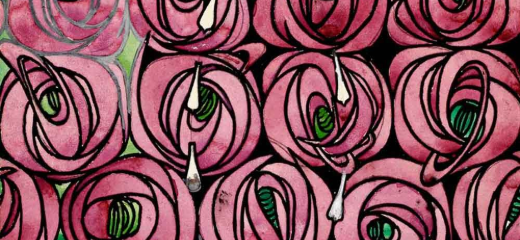The Glasgow School of Art’s Mackintosh building stands as a global icon of architectural beauty and artistic innovation, its significance resonating far beyond Scotland’s borders. The urgent necessity of its full restoration draws poignant parallels to the swift and unified efforts seen in the reconstruction of Notre Dame in Paris following its 2019 fire, where the French state marshaled immense resources and talent to rebuild a national symbol. For over a decade, this internationally important edifice has remained in ruins, a stark and painful reminder of a profound loss that Scotland, and particularly Glasgow, continues to grieve.
At the heart of this architectural marvel is Charles Rennie Mackintosh, a pivotal figure in the Art Nouveau movement and a protomodernist who sought to reform architecture by breaking with past conventions. Born in 1868, Mackintosh’s vision was remarkably ahead of his time, bridging the aesthetic sensibilities of Art Nouveau with the nascent forms of Art Deco. His unique aesthetic was a captivating fusion of Art Nouveau, traditional Scottish motifs, and the minimalist yet impactful influences of Japonism, which were spreading through European art schools and inspiring an anti-academic shift. This influence is evident in the simple lines and emphasis on nature found in his designs. Mackintosh also deeply absorbed principles from the Arts and Crafts movement, particularly from figures like William Morris, advocating for a holistic approach to design where everything was integrated.
Mackintosh was a firm believer in the “total art” concept, or Arte Total, a philosophy he shared with figures like Richard Wagner. This meant that every element, from the grand architectural structure to the smallest interior detail like a door handle or light switch, was meticulously designed to converge into a harmonious and complete aesthetic experience. This integrated design approach, where the part relates to the whole as the whole relates to the part, was revolutionary and served as a clear precursor for later modernist movements such as the Bauhaus.
Glasgow, the vibrant backdrop for Mackintosh’s genius, was a thriving commercial and industrial hub in the 19th century, ranking as the fourth-largest city in Europe. It was a city boasting four universities and a remarkably high literacy rate compared to the rest of Europe, fostering an environment of intellectual ferment that produced luminaries like David Hume and Adam Smith.. It was in this fertile ground that Mackintosh, at just 28 years old, won the competition to design the new Glasgow School of Art in 1896. The building, constructed in two phases between 1897-1899 and 1907-1909, is considered his undisputed masterpiece. Its design famously combines traditional Scottish elements, such as the evocation of a castle, with incredibly modern features, like vast windows that maximize natural light, a radical departure from typical Victorian architecture. For over a century, the Mackintosh building functioned as a practical teaching and studio space, nurturing generations of talented artists.
Beyond the GSA, Mackintosh’s notable works include the Hill House, a residential commission from 1904 that beautifully merges traditional Scottish design with nascent modernity through its austere exterior and rich, ornamental interior. He also famously designed a series of tea rooms for Catherine Cranston, such as The Willow Tea Rooms, which remain strikingly modern today and where every detail, from furniture to tableware, was an extension of his comprehensive design philosophy. His furniture designs, particularly the iconic high-backed chairs, blurred the lines between functional objects and art pieces meant for contemplation. Mackintosh often worked in close collaboration with his wife, Margaret Macdonald, whom he regarded as a genius. Together with Herbert MacNair and Margaret’s sister Frances, they formed the influential group known as “The Four” or “Spook School”, a creative partnership that profoundly shaped the Glasgow Style.
The tragic events of May 23, 2014, when fire first ravaged the Mackintosh building, destroying its famous library—one of the world’s finest examples of Art Nouveau design—were a devastating blow. A £35 million restoration was nearing completion in June 2018 when a second catastrophic fire engulfed the entire site, leaving only a burnt-out shell. The city of Glasgow remains deeply affected, and an “emotional pall” still hangs over it, with the building currently encased in a “plastic funeral shroud.
The path to full reconstruction has been fraught with challenges. The Glasgow School of Art is currently engaged in an arbitration process with its insurers, a complex situation that does not cover the entire cost of the building. Furthermore, there is an ongoing dispute with the owners of the O2 ABC site, which was also destroyed in the 2018 fire. The O2 ABC owners accuse the GSA of “hypocrisy and obstruction” for opposing their redevelopment plans for Sauchiehall Street, claiming GSA dismissed fire warnings prior to the second blaze. They argue that the Mackintosh building is merely a “burnt shell” and that GSA has no concrete plans, secured funding, or timeline for its own rebuild. Conversely, the Glasgow School of Art contends that the proposed Vita Group development, which includes student accommodation, would “fundamentally compromise” the Mackintosh building’s heritage and future use as a working art school, citing concerns about significant daylight reduction and compromised functionality of crucial spaces essential to its design and purpose. Despite these objections, the Vita Group’s plans have received recommendations for approval and support from local businesses and the Chamber of Commerce, who consider the current site an “eyesore” and advocate for swift redevelopment.
Despite these complexities, there is a collective responsibility to bring Glasgow’s “tragic ballad to an end” and see the Mackintosh building rise again. Architects Reiach and Hall, with Purcell, have been appointed to develop faithful reinstatement plans, expected to be published in late 2025, with revised costs and completion dates anticipated sooner. There are strong calls for the UK government to provide comprehensive support for the restoration, mirroring the national effort seen with Notre Dame, and some even suggest transferring responsibility to an independent body to ensure progress.
About artnouveau.club and Glasgow
We are artnouveau.club beleive that the restoration of the Mackintosh building is more than just a construction project; it is about reclaiming a vital piece of cultural heritage and enabling it to continue its “artistic magic” on future generations of students, Scotland, and the wider world. Its profound influence on subsequent architectural and design movements, from the Austrian Secession (where figures like Josef Hoffmann hailed Mackintosh as their “maestro”) to the early forms of Art Deco and the Bauhaus, underscores its enduring international importance. The Mackintosh building is not just a relic of the past but a living testament to a visionary approach to design that continues to inspire and shape modern aesthetics today80. Its reconstruction is not merely an option but a vital imperative for the global artistic community.
For those passionate about Art Nouveau and eager to explore its legacy across Europe, artnouveau.club is the definitive resource. Their Glasgow page (artnouveau.club/city/glasgow) is a perfect example of how the platform immerses visitors in the world of Art Nouveau, with updates on restoration projects, in-depth articles about architectural icons, and insights into the cultural context that shaped the movement. From Charles Rennie Mackintosh’s masterpieces in Glasgow to Jugendstil treasures in Vienna, Barcelona, or Brussels, artnouveau.club acts as a gateway to understanding and experiencing the finest examples of this extraordinary artistic era. It’s not just an online archive—it’s a living, curated guide designed for travelers, architecture lovers, and anyone curious about Europe’s turn-of-the-century creativity.
More than a reference for history and design, artnouveau.club has also established itself as the go-to platform for booking private tours in Art Nouveau cities across Europe. Their handpicked local guides offer tailored experiences that let you step beyond the surface—opening doors to iconic landmarks, hidden interiors, and stories behind the architects and artisans who shaped this style. Whether you’re walking Glasgow’s streets to discover Mackintosh’s legacy, exploring the sinuous facades of Brussels, or marveling at the organic forms of Barcelona’s modernisme, artnouveau.club provides a trusted path to seeing these cities through an expert lens. With continuously updated content and a network of passionate guides, it’s the ideal starting point for anyone planning an unforgettable Art Nouveau journey.










